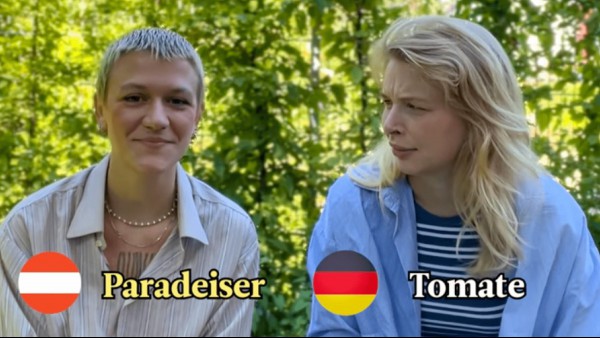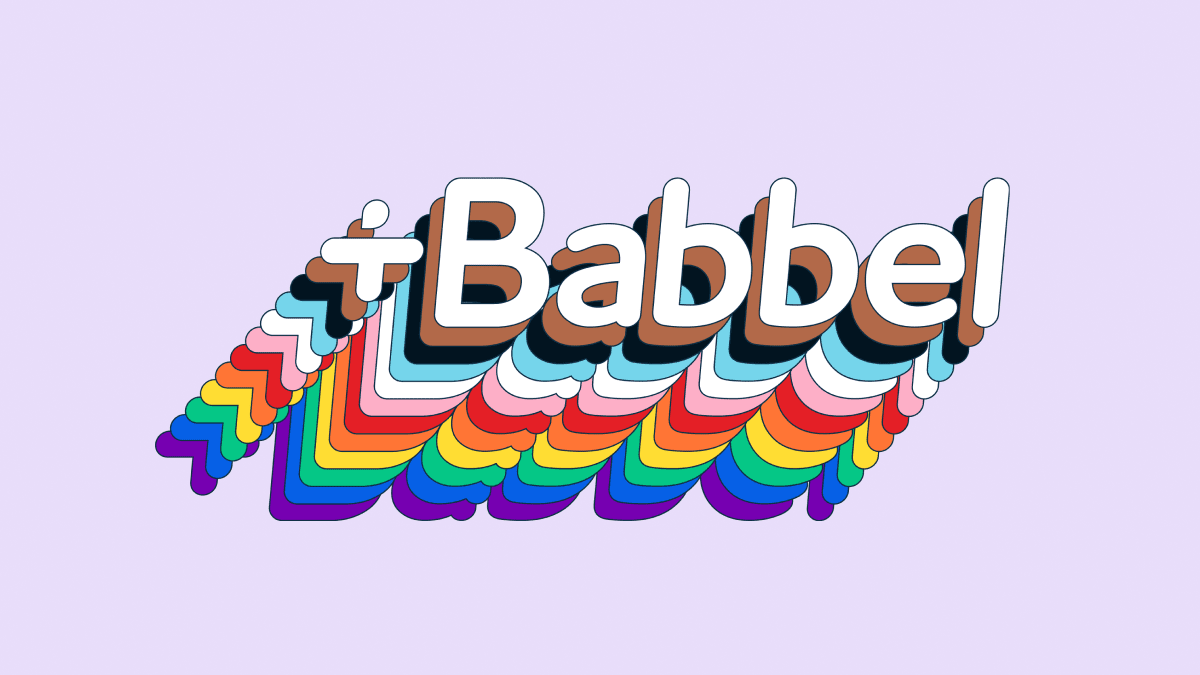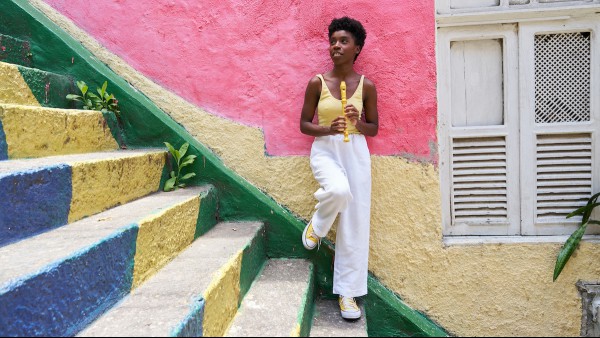The United States Of Accents: Dialects Of The East Coast Cities
The cities on the East Coast of the United States are famous for their accents. Thanks to their densely packed populations, cities are breeding grounds for distinctive dialects. Whether it be “pahk the cah in Hahvahd yahd” or “fuhgeddaboudit,” the sounds of city-dwellers have been imitated lovingly and satirized extensively.
City accents have an outsized impact on the sound of America. So in this installment of the United States of Accents, we’re covering Boston, New York, Philadelphia and Pittsburgh. While these places have very distinct accents, they have plenty in common. They’re very local but affect surrounding areas, they’re associated with the working class, and all of them (except for Pittsburgh’s) seem to be changing.
The accents in this group, with the exception of Pittsburgh, developed for similar reasons. As port cities, they’ve served as mass immigration hubs (and by extension, melting pots for accents). To vastly simplify all these dialects, they’ve all been strongly influenced by the United Kingdom. People from southern England generally moved to New York and Boston, bringing their “r”-less accent with them. Those from northern England and Scotland moved to the more working-class cities of Philadelphia and Pittsburgh. This alone explains many of the differences in pronunciation, but let’s dig deeper.
Boston Accent
If a movie is set in Boston, you can be pretty sure there are going to be some pretty atrocious Boston accents in it. This isn’t to say every actor is bad at it, just that there have been some pretty egregious attempts. Seth Meyers did a clever send-up of this by creating a trailer for Boston Accent, a fake movie satirizing all of the very real movies that stereotype Bostonians. For a real Boston accent, former Boston Mayor Tom Menino gives a great example in the video above (full disclosure: he was often called “Mumbles” Menino).
The most notable part of the Boston accent is, of course, the lack of “r”s. While this is easy to make fun of, people who try to make fun of the accent often get rid of too many “r”s. The letter “r” is only dropped when it’s not followed by a vowel. Even “pahk the cah in Hahvahd yahd” is overkill, because the word “car” would be pronounced with the “r” when spoken in casual Bostonian speech. And depending on how thick a person’s accent is, they’ll lose fewer or more “r”s.
To really sound like you’re from Massachusetts, you need to also learn how the vowels work. For example, when you are saying the word “corn,” you wouldn’t just get rid of the “r” and make it con. You have to make the vowel slightly more nasal and raised, so it’s somewhere between cahn and can. It would be very time-consuming to go through all of the minute differences, but here are a couple examples of this in action:
- for — fah
- four — FOH-wuh
- father — FATH-uh
- bother — BAH-thuh
- wicked — WIK-id (pretty much as expected, but they say it a lot)
While Boston’s is notably distinct, the accent overlaps with those of the rest of New England. If you go to Worcester, Massachusetts, you’ll also hear an accent without “r”s, and pretty much anywhere else you go in New England, you can hear traces of Bostonian dialects. According to a study from a few years ago, however, parts of the Boston accent are starting to disappear. That doesn’t mean New Englanders will start sounding like Midwesterners any time soon, but the features so closely associated with Boston, including the loss of “r”s, may fade over the next few decades.
New York City English
In the linguistic world, New York City has probably been studied the most. The New Yorker accent is often considered the “most American,” and it pops up all the time in popular media. Another reason for the intense study, however, is the work of a single linguist: William Labov. He basically invented the modern study of accents and dialects, and he did many of his earliest studies in New York City.
Like the Boston accent, New York’s is characterized by a lack of “r”s and a varied set of vowels. For people with thick New York dialects, “coffee” will be cawfee, “through” will be troo and “first” will be foist. Another feature is the pronunciation of “-ng.” While places all across the country vary between “-ing” and “-in’” at the end of a word like “working,” New York has another option: a hard “g” at the end. The most notable example of this is “Long Island,” which is sometimes pronounced like Lawn Guy Land. This is also a feature in Pittsburgh, but it’s more strongly associated with New York.
The New York accent is spoken throughout the city, as well as in parts of New Jersey and Long Island. People claim that there is variation within the city, saying that people have Bronx accents or Brooklyn accents, but no studies have shown there to be a significant difference between these regions. There are, however, lots of differences between ethnic groups. The Yiddish population of Williamsburg, for example, sounds very different from the black population in Harlem. These differences certainly shape the impression of what a “New Yorker” sounds like, but it is not factored into what is considered a “New York” accent.
Even if you mastered all of the sounds and slang words of the city, you would still fall short of talking like a New Yorker. The speech in this city is strongly characterized by the perceived aggressiveness of the speaker. While not everyone there does it, people interrupting each other’s sentences is a very common occurrence in conversation, which is why so many people perceive New Yorkers as rude or brash. They’re not intending to be rude, they just don’t take turns as formally as others. It can seem like they’re being too loud and direct, but that’s just because they want you to be loud and direct, too.
Philadelphia English
The Philadelphia accent is not represented nearly as much as Boston or New York, but it’s just as complex and just as much of a source of pride for locals. And fortunately, it’s also been studied a lot. After finishing up in New York, William Labov moved to Philadelphia to continue his sociolinguistic studies. He’s still at the University of Pennsylvania as of this year, and his research continues to shed light on Philly speech.
Linguists believe that New York and Philadelphia share a common ancestor accent that would’ve been around during the 1800s. This is likely because similar groups of immigrants and traders would have traveled to both of these cities during that time period. By tracing the evolution of American vowels, you can see that New York City and Philadelphia split off from each other some time toward the turn of the 20th century. Coincidentally, the two accents now seem to be merging again, as Labov’s more recent research says that Philadelphia is starting to sound more like other Northeastern cities, including Boston and New York.
To the outside world, “Philadelphian” consists of a select few slang terms. Using “youse guys” for plural you (as opposed to the Southern “y’all”) and “jawn” for literally any noun (“Can you hand me that jawn?”) are perhaps the best-known examples. There’s also “boul,” pronounced bull, meaning dude; “ard” meaning something like “alright”; and “Wawa,” which is technically the name of a convenience store chain, but if you’ve ever hung out with someone from Philly, you know they say it all the time.
Then, as noted in the Chris Matthews video above, there are many vowel and consonant differences in Philadelphia English. Most notable is pronouncing “water” like wooder, but there’s also pronouncing “Eagles” like Iggles, “attitude” like A-tee-tood and “eight” like eat. Philadelphians also skip a lot of consonants, saying “pretzel” like pressel and “orange” like arnj. Even their home city gets a heavily accented treatment, sounding like “Fluffyia.” This accent does affect areas outside of Philadelphia, and it presses up against the next accent we’re talking about in the state of Pennsylvania.
Pittsburgh English
Pittsburgh English, known more broadly as Western Pennsylvanian English or colloquially as Pittsburghese, proudly wears the title of the “ugliest accent in America.” This is not our judgment, of course, because we think all accents are beautiful in their own way. But as mentioned in the introduction to this article, the accent of Pittsburgh is unlike that of the other cities here. Pittsburgh used to be part of the midwestern accent family, but for the past few decades, it’s been slowly forming its own way of speech. There are a number of reasons for this.
Being a major steel city, Pittsburgh has always been attractive for working-class people, so immigrants came from all over the world to find jobs. One of the groups that influenced the accent most was the Scotch-Irish, who started coming to the United States in the 19th century. The words “nebby” (nosy), “slippy” (slippery), “jagoff” (stupid person) and “n’at” (and that) all come from the Scotch-Irish. This group also likely gave Pittsburgh its most famous word: “yinz,” meaning “you all.” Derived from “you ones,” “yinz” is quintessential Pittsburghese. People from the area are sometimes called “yinzers,” and there’s even an Instagram knockoff out there called Yinztagram (slogan: “Add some Pittsburgh to your pictures.”).
As you can probably guess, Pittsburgh also has some interesting vowels. You’ll often hear dahntahn for “downtown,” still for “steel” and worsh for “wash.” There’s a complicated series of vowel divides and raises that have led to a very particular sound for Pittsburghese. The vowels have also been shaped by groups of people from the Midwest, New York and Philadelphia.
Between Pittsburghese and Philadelphia English, we’ve covered a good portion of Pennsylvania, but there are other linguistic quirks scattered throughout the state. Because of German settlers, there’s the Pennsylvania Dutch community in eastern Pennsylvania, which is home to the fastest-growing U.S. minority language. There are also the many areas that are not cities, which have their own accents, though those tend to sound midwestern.
It’s hard to do justice to how everyone speaks in a (comparatively) short article. It’s worth looking at the linked resources if you want to discover more about the linguistically diverse eastern seaboard. At the least, you’ll be able to call out the actors who are way off the mark in the next Boston-based movie you see.
RECOMMENDED NEWS

How Similar Are Austrian German And Standard German?
Germans and Austrians are united in the sense that they both speak German. But not all variants of G...

An English Punctuation Review
Is English punctuation really all that important? Let’s look at this classic written joke: “Let’s ea...

Putting our LGBTQIA Employees first during Pride month
For the past few months here at Babbel, we – just like lots of other companies – have been working o...

How To Talk About Transportation In Spanish
The most stressful part of traveling is usually the traveling part. Learning to navigate an unfamili...

What Is A Slogan?
In the world of marketing and communication, few tools are as potent as a well-crafted slogan. These...

What’s The Difference Between A Pidgin And A Creole?
When people from different linguistic backgrounds need to communicate, fascinating things can happen...
Comments on "The United States Of Accents: Dialects Of The East Coast Cities" :